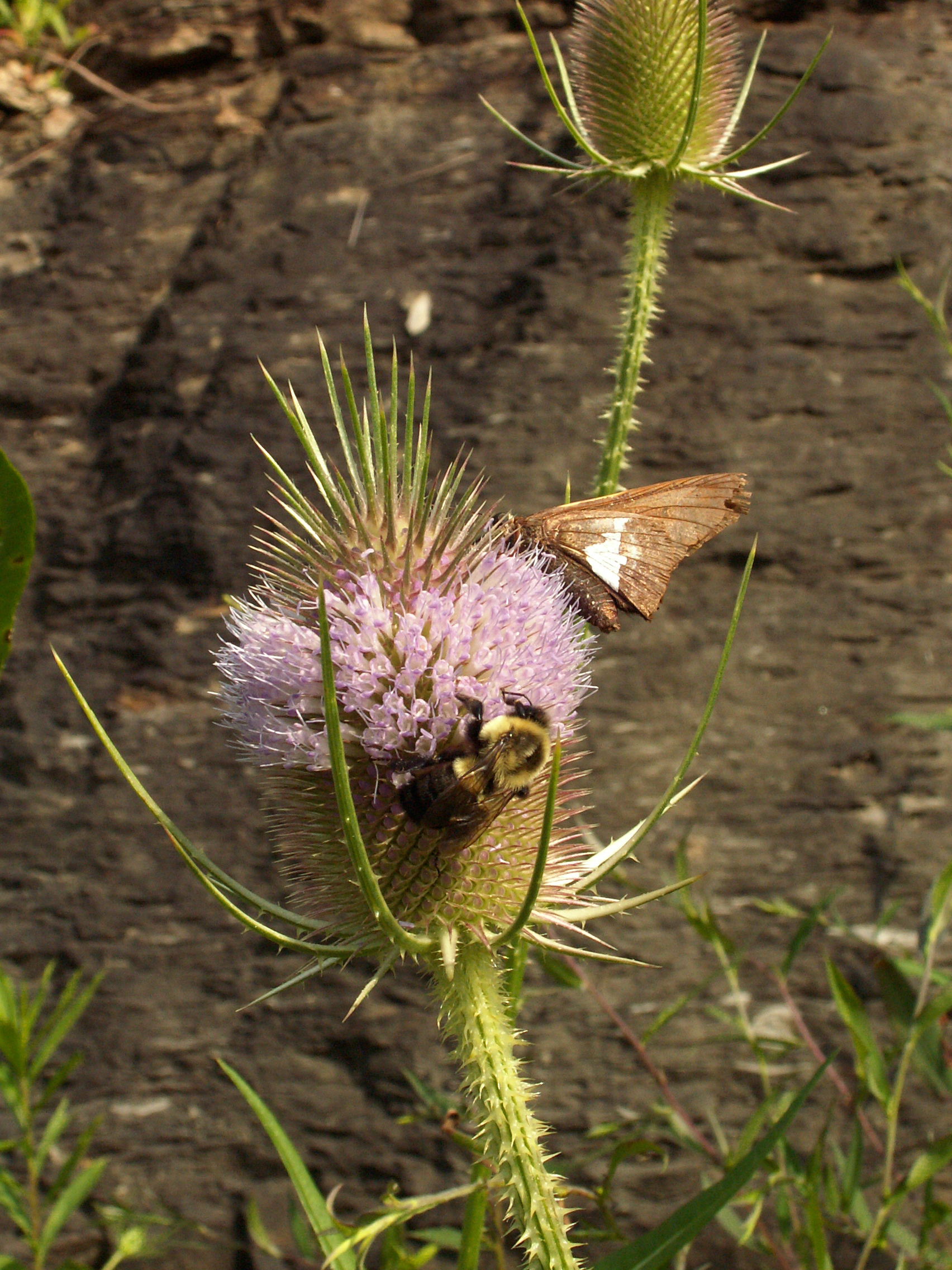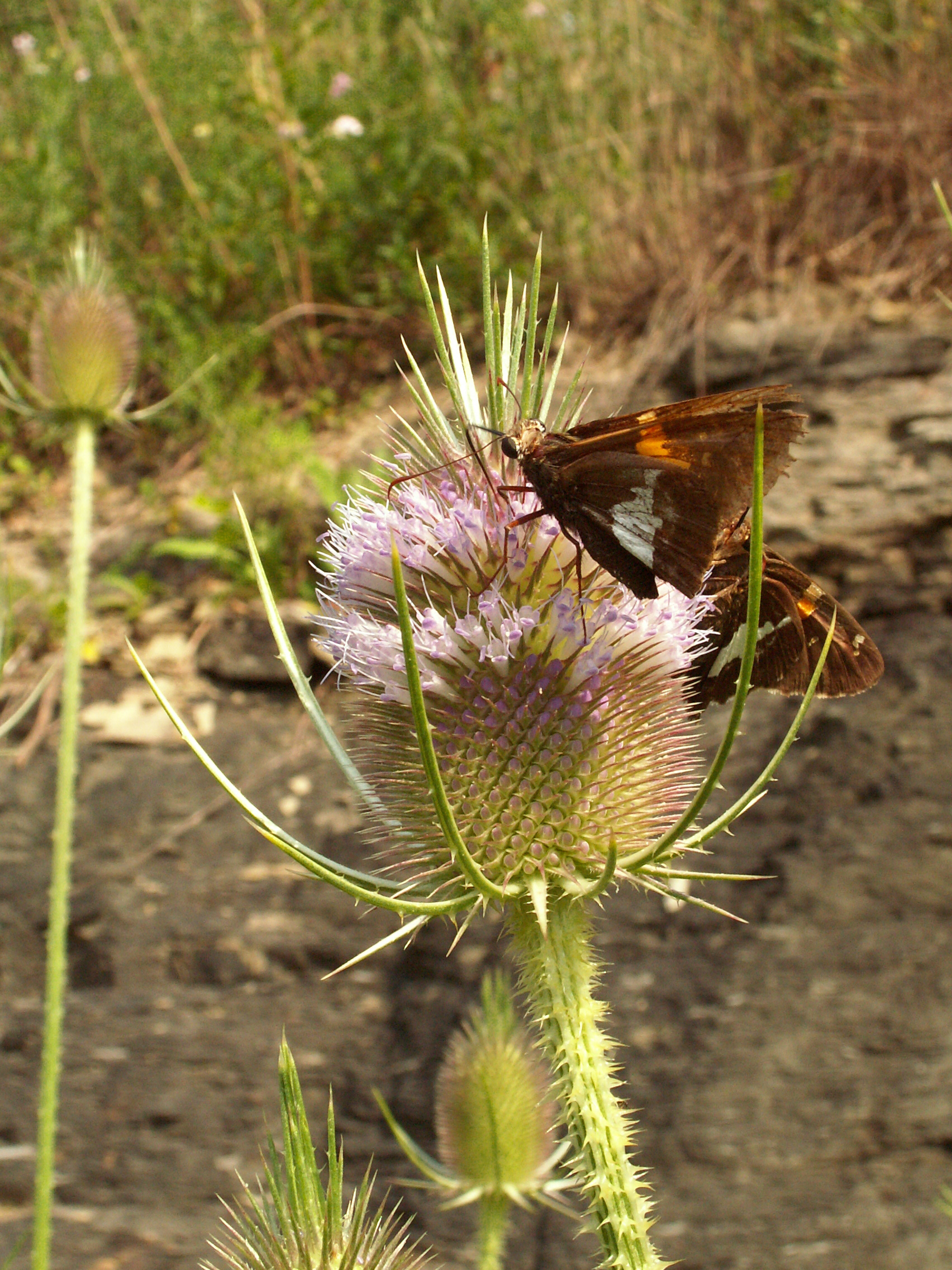
Teasels grow everywhere along roadsides; they can be annoyingly invasive, but—like thistles—extraordinarily beautiful if you take the time to admire the form and structure. They are also much beloved by bees and butterflies, who, if they could only talk, might wax rhapsodic in their praises of the human pioneers who first brought this plant to North America. Our photographs here demonstrate the enthusiasm with which the insect world greets the Teasel blooming season. The name Teasel and the Latin name fullonum (“of fullers”) both come from the use to which they were put: fullers used the dried flower heads to tease the fibers on fabrics. Some people still use them for carding wool today.
The spread of this species has been rapid: Gray calls it “rather rare,” which it certainly is not in our area. This was one of a patch blooming in the middle of July at the edge of a parking lot in Beechview. Gray describes the genus and the species (which he calls D. sylvestris):
DÍPSACUS [Tourn.] L. TEASEL. Involucre many-leaved, longer than the chaffy leafy-tipped bracts among the densely capitate flowers; each flower with a 4-leaved calyx-like involucel investing the ovary and fruit (achene). Calyx-tube adherent to the ovary, the limb cup-shaped, without a pappus. Corolla nearly regular, 4-cleft. Stamens 4, inserted on the corolla. Style slender.—Stout and coarse biennials, hairy or prickly, with large ovoid-ellipsoid heads. (Name from dipsen, to thirst, probably because the united cup-shaped bases of the leaves in some species hold water.)
D. sylvestris Huds. (WILD Т.) Prickly; leaves lance-oblong, toothed and often prickly on the margin; leaves of the involucre slender, ascending, longer than the head; bracts (chaff) tapering into a long flexible awn with a straight point. —Roadsides, rather rare. (Nat. from Eu.)



